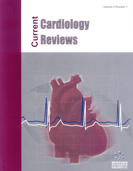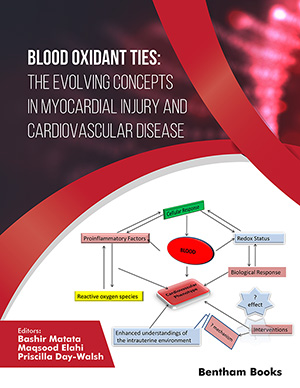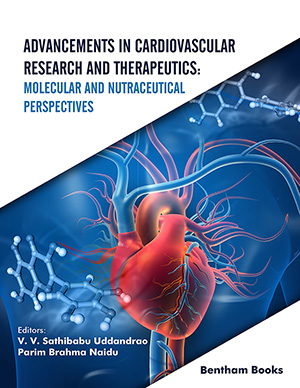Abstract
Coronary artery disease is the leading cause of mortality worldwide. Diagnosis is conventionally performed by direct visualization of the arteries by invasive coronary angiography (ICA), which has inherent limitations and risks. Measurement of fractional flow reserve (FFR) has been suggested for a more accurate assessment of ischemia in the coronary artery with high accuracy for determining the severity and decision on the necessity of intervention. Nevertheless, invasive coronary angiography-derived fractional flow reserve (ICA-FFR) is currently used in less than one-third of clinical practices because of the invasive nature of ICA and the need for additional equipment and experience, as well as the cost and extra time needed for the procedure. Recent technical advances have moved towards non-invasive high-quality imaging modalities, such as magnetic resonance, single-photon emission computed tomography, and coronary computed tomography (CT) scan; however, none had a definitive modality to confirm hemodynamically significant coronary artery stenosis. Coronary computed tomography angiography (CCTA) can provide accurate anatomic and hemodynamic data about the coronary lesion, especially calculating fractional flow reserve derived from CCTA (CCTA-FFR). Although growing evidence has been published regarding CCTA-FFR results being comparable to ICA-FFR, CCTA-FFR has not yet replaced the invasive conventional angiography, pending additional studies to validate the advantages and disadvantages of each diagnostic method. Furthermore, it has to be identified whether revascularization of a stenotic lesion is plausible based on CCTA-FFR and if the therapeutic plan can be determined safely and accurately without confirmation from invasive methods. Therefore, in the present review, we will outline the pros and cons of using CCTA-FFR vs. ICA-FFR regarding diagnostic accuracy and treatment decision-making.
Keywords: Invasive coronary angiography, fractional flow reserve, myocardial, coronary computed tomography angiography, treatment decision-making, coronary artery disease.
[http://dx.doi.org/10.3238/arztebl.2016.0704] [PMID: 27866565]
[http://dx.doi.org/10.1136/heartjnl-2015-307516] [PMID: 26041770]
[http://dx.doi.org/10.1016/j.jacc.2019.10.009]
[http://dx.doi.org/10.1016/j.jacc.2017.04.052] [PMID: 28527533]
[http://dx.doi.org/10.1093/eurheartj/ehw334] [PMID: 27523477]
[http://dx.doi.org/10.1016/j.dsx.2020.03.013] [PMID: 32247212]
[http://dx.doi.org/10.1038/s41569-020-0413-9] [PMID: 32690910]
[http://dx.doi.org/10.1161/CIRCRESAHA.117.308903] [PMID: 28860318]
[http://dx.doi.org/10.1016/j.cmpb.2020.105400] [PMID: 32179311]
[http://dx.doi.org/10.3390/ijerph17030731] [PMID: 31979257]
[http://dx.doi.org/10.1161/CIRCULATIONAHA.111.041160] [PMID: 22199016]
[http://dx.doi.org/10.1161/CIRCULATIONAHA.106.629808] [PMID: 17372188]
[http://dx.doi.org/10.1016/j.neunet.2019.11.017] [PMID: 31835156]
[http://dx.doi.org/10.1093/eurheartj/ehy445] [PMID: 30137305]
[http://dx.doi.org/10.1007/s00330-019-06023-z] [PMID: 30887203]
[http://dx.doi.org/10.1161/01.CIR.0000024109.12658.D4] [PMID: 12163439]
[http://dx.doi.org/10.1016/j.ijge.2013.12.004]
[PMID: 24907084]
[http://dx.doi.org/10.1080/14779072.2020.1787153] [PMID: 32594784]
[http://dx.doi.org/10.1016/j.ihj.2020.07.013] [PMID: 32861374]
[http://dx.doi.org/10.1007/s00392-019-01550-7] [PMID: 31552494]
[http://dx.doi.org/10.1093/eurheartj/ehab423] [PMID: 34331056]
[http://dx.doi.org/10.1161/CIRCINTERVENTIONS.116.004729] [PMID: 27899408]
[http://dx.doi.org/10.18632/oncotarget.20142] [PMID: 29029526]
[http://dx.doi.org/10.1016/S0140-6736(19)31997-X] [PMID: 31488373]
[http://dx.doi.org/10.21037/acs.2018.05.17] [PMID: 30094215]
[http://dx.doi.org/10.5114/pwki.2016.56945] [PMID: 26966445]
[PMID: 22980117]
[http://dx.doi.org/10.1016/j.crvasa.2015.09.007]
[http://dx.doi.org/10.1002/ccd.22372] [PMID: 20146321]
[http://dx.doi.org/10.1148/radiol.2017162641] [PMID: 28926310]
[http://dx.doi.org/10.1002/clc.22273] [PMID: 24652785]
[http://dx.doi.org/10.1161/01.CIR.87.4.1354] [PMID: 8462157]
[http://dx.doi.org/10.1016/0735-1097(93)90825-L] [PMID: 8509531]
[http://dx.doi.org/10.1186/s12962-015-0045-9] [PMID: 26578850]
[http://dx.doi.org/10.1016/S0140-6736(15)00057-4] [PMID: 26333474]
[http://dx.doi.org/10.1136/heartjnl-2014-306578] [PMID: 25637372]
[PMID: 33590679]
[http://dx.doi.org/10.3389/fcvm.2021.707454] [PMID: 34277745]
[http://dx.doi.org/10.15420/icr.2017:13:2] [PMID: 29588737]
[http://dx.doi.org/10.3389/fcvm.2019.00189] [PMID: 31993441]
[http://dx.doi.org/10.1098/rsif.2011.0605] [PMID: 22112650]
[http://dx.doi.org/10.1056/NEJMoa0807611] [PMID: 19144937]
[http://dx.doi.org/10.1161/CIRCULATIONAHA.113.006646] [PMID: 24255062]
[http://dx.doi.org/10.1002/ccd.25752] [PMID: 25413590]
[http://dx.doi.org/10.4103/0366-6999.156805] [PMID: 25963364]
[http://dx.doi.org/10.1016/j.jcin.2009.12.010] [PMID: 20298990]
[http://dx.doi.org/10.1016/j.jcin.2012.10.014] [PMID: 23517831]
[http://dx.doi.org/10.15420/icr.2016:7:2] [PMID: 29588700]
[http://dx.doi.org/10.1002/ccd.28753] [PMID: 31999077]
[http://dx.doi.org/10.1016/j.jacc.2017.04.019] [PMID: 28571641]
[http://dx.doi.org/10.2174/1573403X10666141020113318] [PMID: 25329922]
[http://dx.doi.org/10.1093/ehjdh/ztab012] [PMCID: PMC8242185]
[http://dx.doi.org/10.1371/journal.pone.0208612] [PMID: 30616240]
[http://dx.doi.org/10.1016/j.jcin.2012.08.024] [PMID: 23428006]
[http://dx.doi.org/10.1016/j.jacbts.2017.04.003] [PMID: 28920099]
[http://dx.doi.org/10.1053/j.semnuclmed.2014.05.004] [PMID: 25234083]
[http://dx.doi.org/10.1161/CIRCRESAHA.116.307914] [PMID: 27390333]
[http://dx.doi.org/10.1016/j.jacc.2018.10.056] [PMID: 30654888]
[http://dx.doi.org/10.1038/s41569-020-0341-8] [PMID: 32094693]
[http://dx.doi.org/10.1016/j.jacc.2008.07.031] [PMID: 19007693]
[http://dx.doi.org/10.1056/NEJMoa0806576] [PMID: 19038879]
[http://dx.doi.org/10.1016/j.jacc.2008.08.058] [PMID: 19095130]
[http://dx.doi.org/10.1161/CIRCIMAGING.108.792572] [PMID: 19808560]
[http://dx.doi.org/10.1016/j.amjcard.2014.07.064] [PMID: 25205628]
[http://dx.doi.org/10.1016/j.jacc.2009.08.087] [PMID: 20202511]
[http://dx.doi.org/10.1007/s10554-021-02205-3] [PMID: 34176031]
[http://dx.doi.org/10.2214/AJR.14.13546] [PMID: 25714277]
[PMID: 32722968]
[http://dx.doi.org/10.1016/j.jcin.2016.04.008] [PMID: 27423225]
[http://dx.doi.org/10.1136/openhrt-2021-001597] [PMID: 33622963]
[http://dx.doi.org/10.1016/j.jacc.2011.06.066] [PMID: 22032711]
[http://dx.doi.org/10.1161/CIRCIMAGING.113.000297] [PMID: 24081777]
[http://dx.doi.org/10.1016/j.jacc.2012.11.083] [PMID: 23562923]
[http://dx.doi.org/10.1016/j.euromechflu.2016.06.001]
[http://dx.doi.org/10.1161/JAHA.118.009603] [PMID: 29980523]
[http://dx.doi.org/10.1016/j.jcmg.2015.08.021] [PMID: 26897669]
[http://dx.doi.org/10.1253/circj.CJ-13-0161] [PMID: 23420635]
[http://dx.doi.org/10.1001/2012.jama.11274] [PMID: 22922562]
[http://dx.doi.org/10.1016/j.jacc.2013.11.043] [PMID: 24486266]
[http://dx.doi.org/10.1016/j.jcmg.2015.09.019] [PMID: 26897667]
[http://dx.doi.org/10.1016/j.amjcard.2015.07.078] [PMID: 26347004]
[http://dx.doi.org/10.1016/j.ijcard.2015.03.025] [PMID: 25781722]
[http://dx.doi.org/10.1038/s41598-018-29910-9] [PMID: 30069020]
[http://dx.doi.org/10.1001/jamacardio.2017.1314] [PMID: 28538960]
[http://dx.doi.org/10.1016/j.jcmg.2015.11.025] [PMID: 27085447]
[http://dx.doi.org/10.1007/s00330-021-07771-7] [PMID: 33630159]
[http://dx.doi.org/10.1093/ehjci/jew094] [PMID: 27354345]
[http://dx.doi.org/10.1016/j.jcmg.2016.09.028] [PMID: 28109933]
[http://dx.doi.org/10.1016/j.jcct.2020.08.005] [PMID: 32943356]
[http://dx.doi.org/10.1016/j.acra.2016.07.007] [PMID: 27639627]
[http://dx.doi.org/10.1016/j.jcmg.2015.06.003] [PMID: 26298072]
[http://dx.doi.org/10.1016/j.jcmg.2014.10.013] [PMID: 25797129]
[http://dx.doi.org/10.1186/s12938-021-00914-3] [PMID: 34348731]
[http://dx.doi.org/10.1016/j.jcmg.2016.11.024] [PMID: 28412436]
[http://dx.doi.org/10.1093/eurheartj/ehv444] [PMID: 26330417]
[http://dx.doi.org/10.3390/jcm9020604] [PMID: 32102371]
[http://dx.doi.org/10.1016/j.jcmg.2015.12.026] [PMID: 27568119]
[http://dx.doi.org/10.1016/j.jcin.2013.05.024] [PMID: 24332418]
[http://dx.doi.org/10.1093/eurheartj/ehab444] [PMID: 34269376]
[PMID: 34609200]
[http://dx.doi.org/10.1093/icvts/ivz046] [PMID: 30887024]
[http://dx.doi.org/10.1093/eurheartj/ehy581] [PMID: 30312411]
[http://dx.doi.org/10.1161/CIRCINTERVENTIONS.118.007607] [PMID: 31833413]
[http://dx.doi.org/10.1136/bmjopen-2020-038152] [PMID: 33303435]
[http://dx.doi.org/10.21037/cdt.2019.11.07] [PMID: 33381442]
[http://dx.doi.org/10.1016/j.jacc.2016.05.057] [PMID: 27470449]
[http://dx.doi.org/10.1016/j.jacc.2015.09.051] [PMID: 26475205]
[http://dx.doi.org/10.1016/j.clinimag.2014.11.020] [PMID: 25649255]





















